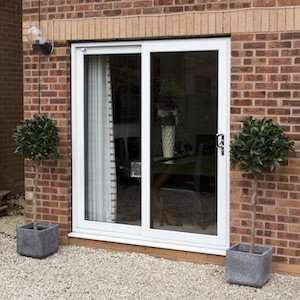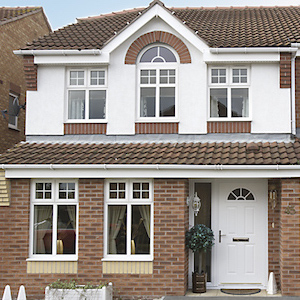You'll Be Unable To Guess Upvc Windows Doors's Tricks
페이지 정보

본문
 The Ultimate Guide to uPVC Windows and Doors: Why They Are the Perfect Choice for Your Home
The Ultimate Guide to uPVC Windows and Doors: Why They Are the Perfect Choice for Your Home In recent years, uPVC windows and doors have skyrocketed in appeal among house owners and commercial developers alike. Understood for their remarkable resilience, energy effectiveness, and aesthetic appeal, uPVC (unplasticized polyvinyl chloride) has actually emerged as an extremely versatile and economical product. In this short article, we'll explore the benefits of uPVC doors and windows, their essential functions, and why they are thought about a smart financial investment for modern-day home.
In recent years, uPVC windows and doors have skyrocketed in appeal among house owners and commercial developers alike. Understood for their remarkable resilience, energy effectiveness, and aesthetic appeal, uPVC (unplasticized polyvinyl chloride) has actually emerged as an extremely versatile and economical product. In this short article, we'll explore the benefits of uPVC doors and windows, their essential functions, and why they are thought about a smart financial investment for modern-day home.What is uPVC?
uPVC, or unplasticized polyvinyl chloride, is a type of rigid plastic material extensively used in construction. Unlike routine PVC, the "unplasticized" type makes uPVC extremely durable while preserving a lightweight structure. It is resistant to weathering, corrosion, and chemical direct exposure, making it perfect for windows and doors that are exposed to the components.
As an environmentally friendly option to conventional wood and aluminum alternatives, uPVC requires very little upkeep and has a remarkably long lifespan, which interest sustainability-conscious consumers.
Key Benefits of uPVC Windows and Doors
Energy Efficiency
Energy efficiency is one of the primary reasons house owners choose uPVC doors and windows. The product has excellent insulation properties, which help control indoor temperatures by sealing out heat throughout summer seasons and maintaining warmth in winters. Paired with double or Upvc Windows Doors triple glazing, uPVC can considerably lower energy usage and contribute to lower energy costs.
Durability and Weather Resistance
uPVC is extremely durable and designed to hold up against harsh climate condition, such as heavy rain, snow, and UV direct exposure, without fading, breaking, or warping. This makes it a great option for both city and seaside homes, where materials are often exposed to extreme environmental conditions.
Low Maintenance
Bid farewell to routine sanding, painting, upvc Windows doors and polishing! Unlike wood, uPVC does not need frequent maintenance. An easy wipe-down with soapy water suffices to keep uPVC doors and windows appearing like new for years.
Noise Insulation
For homes found in loud city environments or near hectic roads, uPVC provides excellent soundproofing. The combination of Upvc Windows Doors frames front door with window double glazing can help considerably reduce outside sound, developing a quieter and more peaceful indoor environment.
Security Features
uPVC windows and doors are extremely strong and feature multi-point locking systems, improving security and making them resistant to break-ins. This makes them a favored alternative for property owners who prioritize safety without compromising aesthetic appeals.
Aesthetic Versatility
Contrary to the misunderstanding that uPVC just comes in white, modern-day uPVC windows and doors are readily available in a range of colors, surfaces, and designs. Whether you choose a traditional woodgrain surface or a streamlined contemporary appearance, uPVC can be tailored to match your home's design.
Cost-Effectiveness
Compared to products like aluminum or natural wood, uPVC is a lot more budget-friendly without jeopardizing on quality. Its toughness and low maintenance requirements likewise mean you conserve money in the long run.
Popular Types of uPVC Windows and Doors
Casement Windows: Hinged on the side, these windows open outward and supply outstanding ventilation and unobstructed views.
Sliding Windows and Doors: Ideal for areas with restricted room, these feature horizontal sliding panels that conserve space while maximizing functionality.
Bay Windows: Perfect for including a touch of beauty and increasing the quantity of natural light in your house.
Tilt-and-Turn Windows: These offer double performance, permitting you to open them either completely or tilt them for ventilation.
french doors and side windows Doors: Stylish and functional, French doors made of uPVC include beauty while enhancing the sense of open space.
Bi-folding window doors Doors: A modern-day option for linking indoor and outdoor areas, these doors fold nicely to one side, producing a seamless shift.
uPVC vs Traditional Materials
When compared to conventional materials like wood or aluminum, uPVC uses distinct advantages:
uPVC vs Wood: While wood has a classic appeal, it is susceptible to warping, decaying, and termite damage with time. Wood also needs regular maintenance and can be pricey. uPVC, on the other hand, is highly durable, low-maintenance, and cost-efficient.
uPVC vs Aluminum: Aluminum frames are strong and smooth however are not as energy-efficient as uPVC due to aluminum's conductivity. uPVC is a better insulator, specifically in areas with extreme weather.
Environmental Impact of uPVC
uPVC is 100% recyclable, making it a more sustainable alternative compared to non-recyclable products. Makers are significantly adopting environment-friendly practices to reduce waste during production. Moreover, the energy performance of uPVC windows and doors can help reduce your home's carbon footprint.
Tips for Choosing uPVC Windows and Doors
Concentrate on Quality: Always choose popular and credible brands to ensure you're purchasing high-quality uPVC that lasts for decades.
Modification: Look for modification alternatives to match your home's special design.
Glazing Options: Pair uPVC frames with double or triple glazing for the very best thermal and acoustic insulation.
Guarantee: Check if the item comes with a thorough guarantee for comfort.
Installation: Choose expert installers who have experience handling uPVC to ensure a flawless surface.
Conclusion
uPVC windows and doors are not just an investment in your home's looks-- they're an investment in durability, performance, and energy cost savings. As property owners continue to focus on environment-friendly and economical services, uPVC stands out as one of the very best materials on the market. Whether you're refurbishing your home or constructing a new one, uPVC windows and doors use a best mix of usefulness, design, and value for money.
If you're wanting to upgrade your home's windows and doors, think about uPVC for a solution that combines performance, price, and modern appeal.
- 이전글How To Fix Tilt And Turn Windows Tools To Streamline Your Everyday Lifethe Only How To Fix Tilt And Turn Windows Trick That Everybody Should Learn 25.02.08
- 다음글Why Nobody Cares About Fireplace 25.02.08
댓글목록
등록된 댓글이 없습니다.

